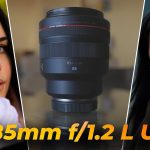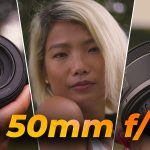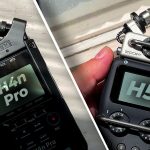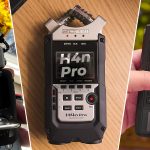On your journey to becoming a better photographer or videographer, you’re bound to have encountered ISO on the daily. Perhaps you have a vague idea of what it is, or maybe you have no clue, and have so far classed it as some form of voodoo. Regardless, in this article, we’re going to demystify ISO, in a way that is simple to understand.
始めよう。

Meaning
Ok, so first off, what does ISO actually mean?
ISO stands for “International Organisation for Standardisation.” The name might seem rather odd , as it does not align with the acronym in English. The reason is that the organisation’s name would have different acronyms in different languages (e.g., IOS in English, OIN in French for “Organisation Internationale de Normalisation”). To avoid this issue, the organisation chose “ISO” as its universal short form, derived from the Greek word “isos,” meaning “equal.”
In the context of photography, ISO represents a standardised scale for sensitivity to light, whether it’s film sensitivity in analog cameras or sensor sensitivity in digital cameras.
In other words, ISO is a standard, which allows you to describe how sensitive something is to light, which in our case, it would either be film, or a camera sensor. The higher the number, the more sensitive.
How it Works
Typically, ISO values start from a base value such as 100 (though 50 is achievable in some high-end models) and can go up to 12,800 or even higher in professional cameras, like my Canon R5. The base ISO is usually the lowest sensitivity setting and provides the cleanest image, free from what photographers refer to as “noise.”
As you increase the ISO value, the sensor becomes more sensitive to light, allowing you to shoot in darker conditions without using a flash. But there’s a trade-off: the higher the ISO, the more “noise” or grain you might see in the photo.
What is Noise?
Have you ever switched the channel on your TV, only to be met with a bunch of static? That’s kind of what noise looks like. An analogy for this, for all of you audio nerds out there, is the sound to noise ratio in your recordings.
There is noise inherent in both cameras, and microphones. Now, the quieter the thing that you’re trying to record is (less light), the more noise will be present in your recording. You can think of it kind of like that.
Now, there are ways in which you can more organically introduce light into your images, such as aperture, shutter speed, and even artificial lighting, but those topics are beyond the scope of this article.

Why Change It?
So, why should you change the ISO on your camera? Why bother? Well, there are instances where you aren’t able to introduce light any other way.
Let’s say that your aperture is already as wide as possible, and if you lowered your shutter speed any lower, you’d start to get serious motion blur. In that case, what do you do? Your only real option is to bump up the ISO, in order to brighten things up a little bit.
Any Downsides?
Now, in terms of downsides, the only real one is the noise that you introduce. The higher the ISO, the more noise. While some noise can be reduced in post-processing, it’s always best to get the cleanest shot possible in-camera.
Modern cameras, especially higher-end DSLRs and mirrorless models, have become incredibly good at handling noise even at high ISO settings. However, it’s still something to be aware of.
Tips & Tricks
Now that you know the good and the bad, I have a treat for you. Here are some tips and tricks that will allow you to adjust your ISO well, and get the best images possible.
Start Low
I’ve touched on this briefly earlier, but you want to start low, maybe around 400, and only increase if needed. This is of course highly dependent on the situation you’re in, how much light there is available, how fast your subject is moving, etc.
Typically what you want to do is open your lens aperture as much as possible. Then, try and see how slow you can get your shutter speed. The slower it shuts, the more light. However, the higher the chances of introducing motion blur into your images, either due to the subject moving, or your hands.
As a general rule, you don’t want to set your shutter speed lower than your focal length. So, for example, if your lens is at 50mm, getting close to 1/50s in terms of shutter speed is pushing it, and that’s when you start getting quite a bit of motion blur. Try to keep it about that, if possible.
Finally, you have the ISO, which is the last option you can fiddle with, at least in terms of the camera itself. You can now start to introduce some higher ISO, if needed, however, once you start getting over 800 ISO, noise will start to creep into the shadows.
Beware.
Know Your Camera
It turns out that different cameras deal with ISO differently, and produce variable amounts of noise. This evening, take a bit of time, and experiment with what your camera can do, in various amounts of low light.
Use Noise Reduction Sparingly
Certain software, such as Adobe Lightroom, allows you to reduce some of the noise in your images. However, as the big bold title just above suggests, it needs to be used rather sparingly. If you push that slider too far, weird things can start to happen.
Consider Your Goal
Now, what will the image be used for? Is it for a large billboard? In that case, you want the cleanest image possible. There’s a reason why most billboard images are taken in studios. It’s because they can adjust the image as needed, and thus ISO becomes way less of a problem.
However, if you’re taking photos for social media, a bit of noise is fine, as it may not be that noticeable.
Film vs Digital
I’d be remiss if I did not make this point. You see, digital noise and film grain aren’t quite the same thing. Most people agree that film grain looks rather aesthetic, whereas digital noise does not. As a result, if you’re using film, you actually have a lot more leeway, and in fact, the grain can even give your photos character.

結論
Ok, so what did we learn today? ISO is a powerful tool, which must be used carefully, otherwise, your images will suffer. Remember that with anything that has to do with photography and art in general, practice is key. Take a bunch of photos, all the time, and analyse them carefully. Learn from your mistakes, and so each time you take more photos, you’ll get better and better.
推薦の言葉
お役に立てたなら幸いです。私の他の記事もぜひご覧いただきたい。次のようなことに興味のある方なら、どなたでもご覧いただけます。 オーディオあるいは カメラとレンズ.ビデオレビューがお好きな方は、私のビデオをご覧ください。 YouTubeチャンネル.



